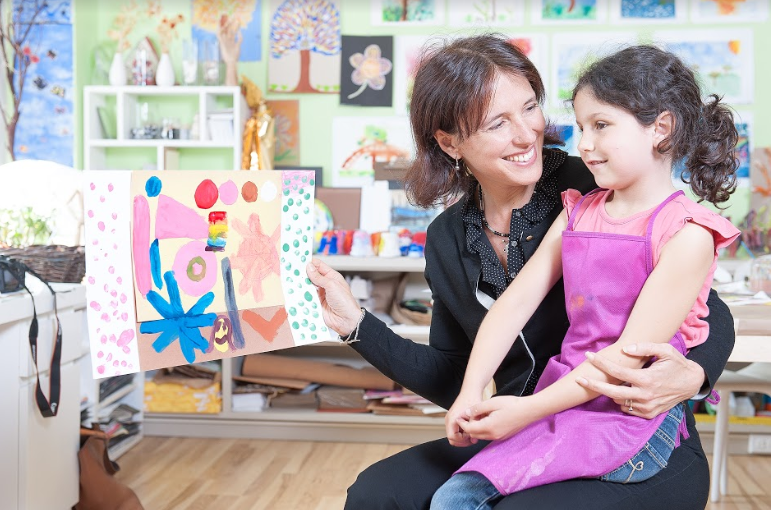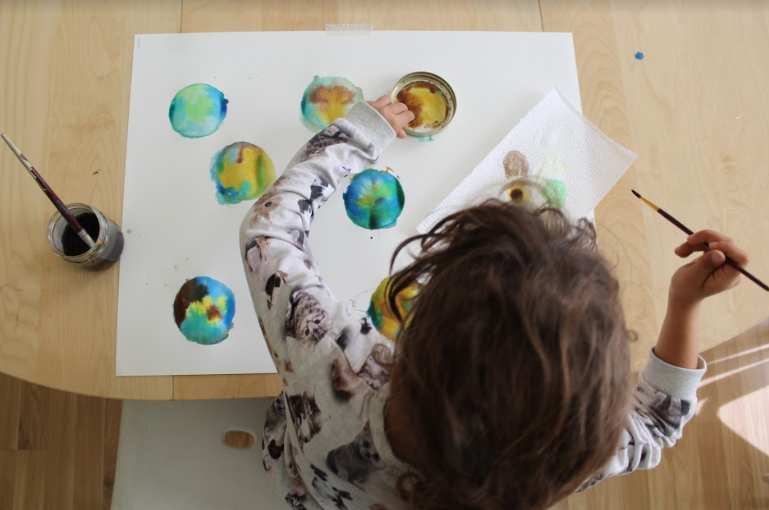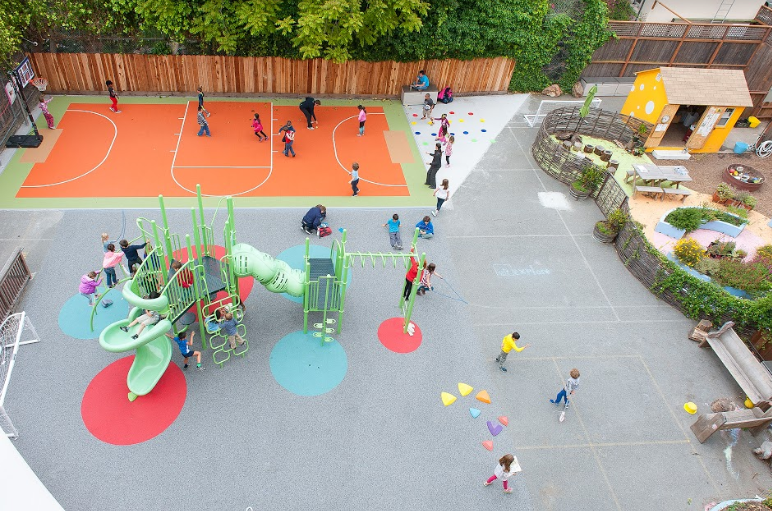Every Child Loves La Scuola
Teachers at La Scuola International School believe that the world can be changed through education. For this reason, the school mission is “To Inspire Brave Learners to Shape the Future.”
Although La Scuola is an “Italian immersion” school, many parents from all over the world enroll their kids here. Not only because they are in love with Italy and Italian culture, but also because it is the First International Baccalaureate (IB) K8 World School in San Francisco and it is inspired by the Reggio Emilia approach, a constructivist educational philosophy first developed after World War II by pedagogist Loris Malaguzzi and parents in the villages around Reggio Emilia, Italy.
It’s almost unbelievable that it started out as a playgroup in 2002 to evolve into a recreational program and then a fully licensed preschool, La Piccola Scuola Italiana (The Little Italian School). Next year they will inaugurate their 8th grade and move to a new campus. Valentina Imbeni, director of La Scuola since 2007, is part of this great success.
Mrs. Imbeni, how did you get involved with La Scuola?
I first moved to the Bay Area in 2000 to work as a researcher in biomedical engineering for the University of Berkeley. But after the birth of my two sons, Stefano and Matteo, I discovered my passion for children and early childhood education. So, in 2006 I got involved with what was at that time just a small cooperative of Italian-American and Italian families.
How could La Scuola go from that first, amatorial playgroup to a school with over 260 children?
Actually, we will have 320 children enrolled next year! I joined the group with my first child, but after only six months the school went through a moment of crisis. We had lost our Italian teacher with a license and had to change location. The board asked me to help them rebuild the school. I was in maternity leave expecting my second child, and it was a particular moment in my life as I had just lost my father, so I decided to step in. It would have been such a shame to lose this group. Further, there was no real Italian school west of New York, we needed to do something. I found a new place, we enrolled with the Reggio Emilia method - I am from Modena and knew that approach very well - and created something more structured. We engaged with the community and started to fundraise. We also engaged with an architect who helped us to create a school according to the architectural principles of the Reggio Emilia method. We soon became a model of education and were approached by parents from other communities and countries. We have now over 31 languages spoken in the school. We like to think that we offer high-quality education, we are not only an Italian school.
From next year, you will be offering a 8th grade class. Are you planning of going beyond this grade?
We have been growing a grade a year and people are already asking for a high school program, but for now, we will stop at the middle school level. This year we also became a “scuola paritaria.” It means that we have been recognized by the Italian government and we are the second school in the US to receive this title. It’s a great result as there are only 43 “scuole paritarie” around the world, very few compared to the French system that has 55 recognized schools only in the US.
Are all your teachers Italians?
No, but they all have native-like fluency in Italian. In pre-school Italian is spoken approximately 90%, but then less and less over the years to give students the possibility to be proficient in other schools while being bilingual. From grade 6-8 they will speak 70% English and 30% Italian.
Where do you find funds?
Mainly from parents, but not all of them. We also offer generous financing programs. About 30% of our students receive a form of help that can be from $2000 to $28,000 a year, which is almost the total cost of one year. We raise money every year to support people who cannot pay full tuition. We can reach even half a million dollars in donations. Our most successful event is the Dolce Vita gala where we auction gifts from our donors.
Can you explain your approach? Isn’t the Reggio Emilia method only for kindergarten children?
It started as an early childhood program but later became very famous in the US thanks to an article in Newsweek published in 1981 about the best schools in the world. Ever since, it has been applied in different grades successfully. It’s an inquiry-based type of learning. It is cross-cultural and focuses more on the learning part than the teaching promoting critical thinking.
Are there any kids of celebrities attending?
There are but I am not allowed to share their names.







































i-Italy
Facebook
Google+
This work may not be reproduced, in whole or in part, without prior written permission.
Questo lavoro non può essere riprodotto, in tutto o in parte, senza permesso scritto.